So of course you’ve heard of Mistletoe, right? That green stuff that people hang around everywhere at Christmas time, expecting you to kiss the unsuspecting someone who happens to step beneath it? Well Mistletoe is the answer to last week’s puzzler. Those green, growing “balls” that you often see at the tops of trees, especially now when many of the trees are without their leaves, are Mistletoe, Phoradendron, which is greek for “tree thief.”
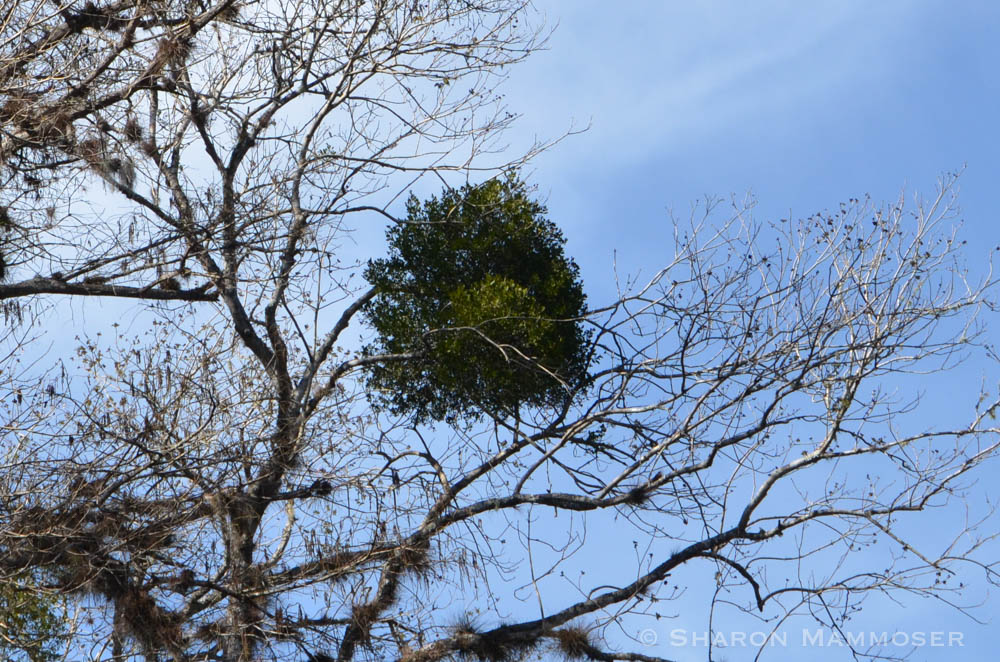
The holiday association makes people think Mistletoe is a sweet plant. How could it not be, right? Well many people would probably be surprised to learn that Mistletoe is a parasite that attaches itself to its host and then steals water and nutrients. If there are enough Mistletoe balls the tree can suffer and even die.
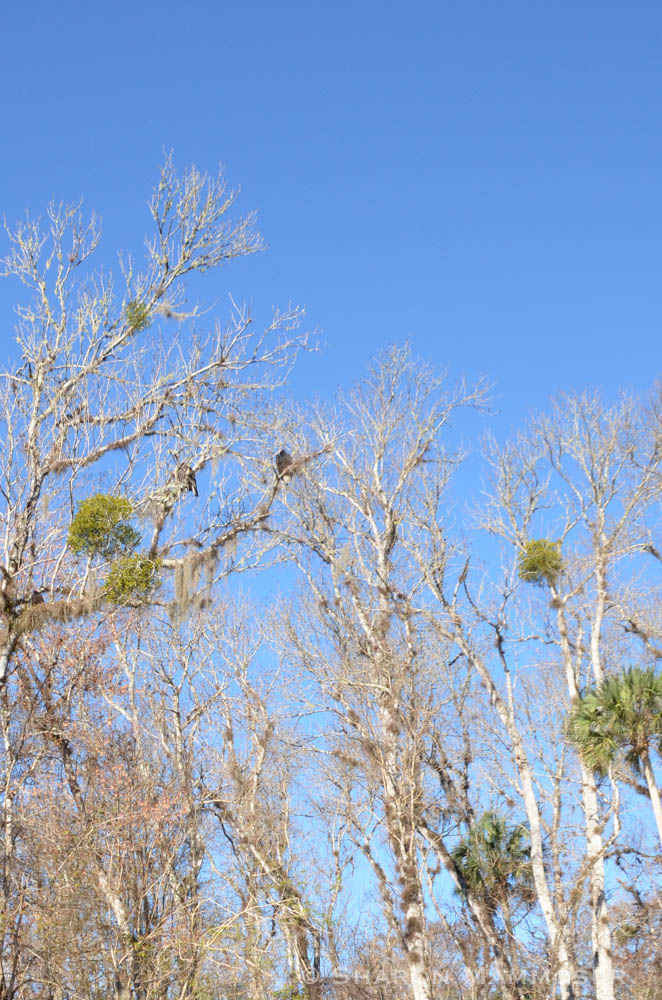
According to the National Wildlife Federation’s Blog, “there are more than 1,300 mistletoe species throughout the world. The continental US and Canada are home to more than 30 species.” All of them are called hemiparasitic plants which means they have chlorophyll and can carry out photosynthesis but that they require both water and nutrients from a plant host.
Mistletoe has a lot of common names, including Birdlime, All Heal, Golden Bough, Drudenfuss, Devil’s Fugue or Witches Brooms. In a good spot with lots of sun, a Mistletoe ball can reach 5 feet across and weigh up to 50 pounds!
It’s not all bad though when it comes to Mistletoe as it is a plant that has value for wildlife, and for humans. There are three species of butterflies that are dependent on Mistletoe– The Great Purple Hairstreak, the Thicket Hairstreak and Johnson’s Hairstreak. Also there are a handful of birds that will readily build their nests directly in the balls of Mistletoe, including Pygmy Nuthatches, Mourning Doves, Chickadees, House Wrens, some squirrel species, and in the west, Spotted Owls and Cooper’s hawks. Many animals including birds, deer, porcupine, chipmunks, elk and other animals will eat the white berries that Mistletoe produces. The National Wildlife Federation says that “a Mistletoe infested forest may produce three times more cavity-nesting birds than a forest lacking Mistletoe,” as dead trees are useful to a variety of animals. And humans? Well besides all the kissing that gets caused from the plant, it also shows promising results in the fight against colon cancer.
And just to note, sometimes, especially now when the trees have no leaves, you will notice leafy balls in the tops of trees. These are squirrel nests, or dreys. You can tell them from Mistletoe because they are made of dead leaves and are not growing. Mistletoe is a green, living thing and will get bigger over time.
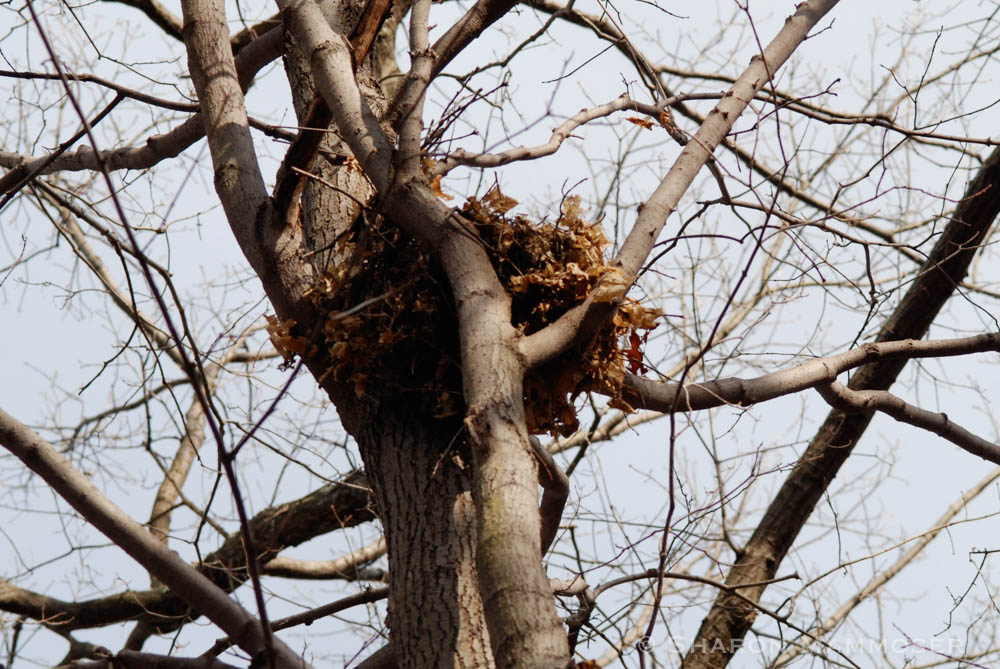
So now you know. Mistletoe may not be what you thought it was, but it isn’t all bad either.
Ready for another one? Let’s do another thing you may have seen and can possibly name but may have wondered what it is exactly.

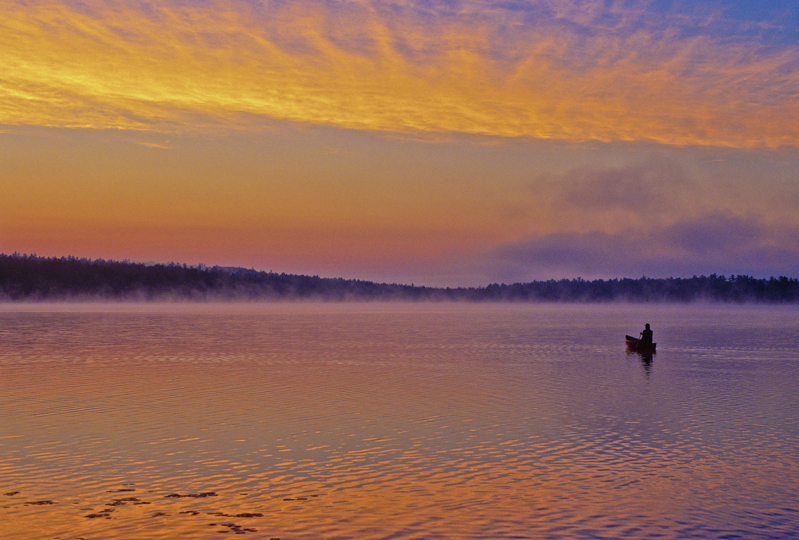
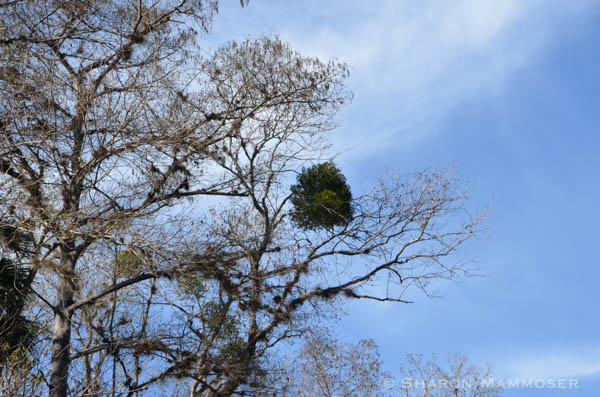
That’s fascinating. I learn something every time I visit your blog!
Renee, thanks for writing! Am glad you are enjoying the posts. Happy Monday!